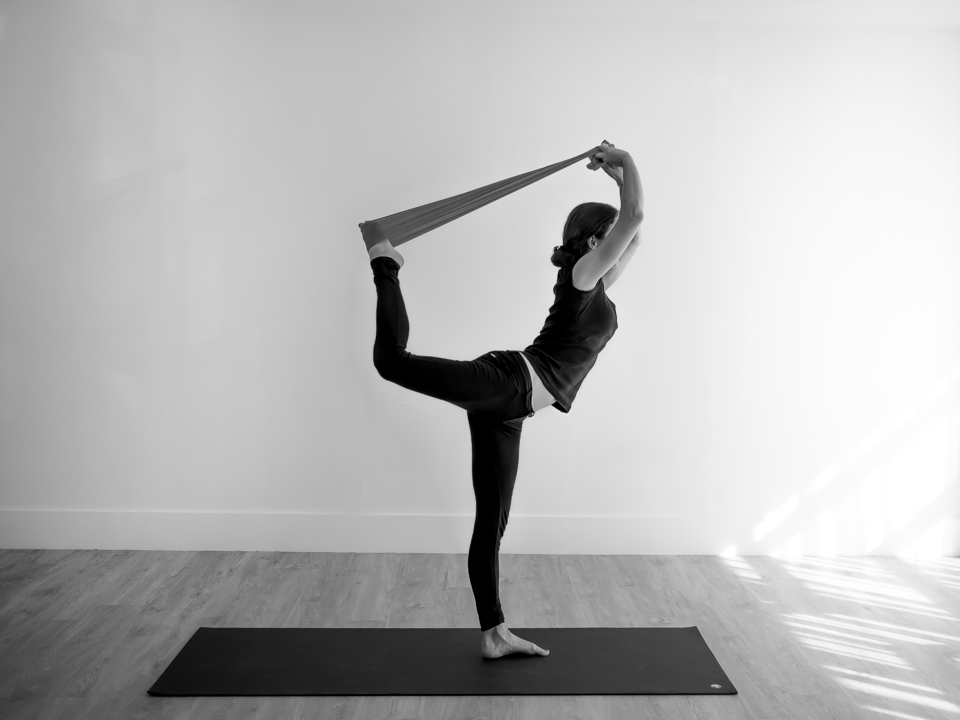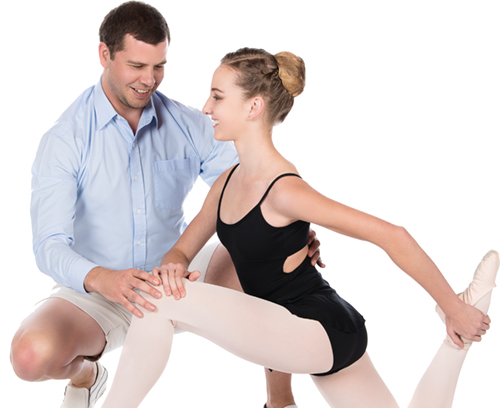The challenges of the Dancing Athlete
So what are the challenges of 'The Dancing Athlete'? I have loved dancing and worked with dancers for most of my professional life. The challenge it presents, as an art form and sport as an athlete are many, matched equally by the challenge of trying to help and prevent their injuries.
Dancers do sustain many injuries; a recent study with 266 elite classical ballet students recorded a 12 month injury incidence of 378 (Ekegren et al 2013). It is rare however for their injuries to be career threatening and there is much that can be done by the medical professionals working with them.
 There is a common misconception that dance, especially classical training, is bad for you. On the contrary if pursued at the appropriate level for the body that belongs to you I believe it can help maintain and improve movement, strength, proprioceptive awareness and contribute to wellness mentally and physically in all populations.
A trained dancer moves all joints, knows the exact attitude of the little finger while doing the most difficult move or lift of the leg and shows the emotion connected with the piece they are dancing. They spend years perfecting their bodies and their skills to make demanding choreography look effortless and tell a story.
In order to help them do this, medical and allied health input is important. Recognising what structure might be causing pain or reduced function and also what might have led to this in the first instance. Sometimes a victim causes the pain however the root cause lies elsewhere in the kinetic chain. This is true of all sports but critical in the analysis of a ballet dancer.
Knowledge of the requirements of dance is important in assessment for both injury prevention and rehabilitation. There are several key movements that underpin much of the classical ballet repertoire and being aware of these will help guide your work with your dancing population.
The most exciting thing about working with athletes is seeing the reward of the collaboration between you and the dancing athlete. Watching dance is an experience not enough of us have had. I encourage all of you to try this, especially if you are interested in working with dancers. I will never forget one performance by a student of mine who had struggled for one a half years with an iliac crest apophysitis. To see her on the stage at the Opera House brought tears to my eyes as well as the house down.
Enjoy working with your dancing athletes, ask questions if you don't understand their movement requirements, they will reward your efforts!
To learn more about this imperative subject read about our new online course 'The Dancing Athlete'.
Rachele Quested is a Doctor in Brisbane, Queensland, having previously become an APA Sports Titled Physiotherapist and a Pilates teacher. Rachele has worked extensively with athletes from a wide variety of sports during her career, which has included 5 years at the Royal Ballet Upper School in Covent Garden and work with the Queensland Ballet.
There is a common misconception that dance, especially classical training, is bad for you. On the contrary if pursued at the appropriate level for the body that belongs to you I believe it can help maintain and improve movement, strength, proprioceptive awareness and contribute to wellness mentally and physically in all populations.
A trained dancer moves all joints, knows the exact attitude of the little finger while doing the most difficult move or lift of the leg and shows the emotion connected with the piece they are dancing. They spend years perfecting their bodies and their skills to make demanding choreography look effortless and tell a story.
In order to help them do this, medical and allied health input is important. Recognising what structure might be causing pain or reduced function and also what might have led to this in the first instance. Sometimes a victim causes the pain however the root cause lies elsewhere in the kinetic chain. This is true of all sports but critical in the analysis of a ballet dancer.
Knowledge of the requirements of dance is important in assessment for both injury prevention and rehabilitation. There are several key movements that underpin much of the classical ballet repertoire and being aware of these will help guide your work with your dancing population.
The most exciting thing about working with athletes is seeing the reward of the collaboration between you and the dancing athlete. Watching dance is an experience not enough of us have had. I encourage all of you to try this, especially if you are interested in working with dancers. I will never forget one performance by a student of mine who had struggled for one a half years with an iliac crest apophysitis. To see her on the stage at the Opera House brought tears to my eyes as well as the house down.
Enjoy working with your dancing athletes, ask questions if you don't understand their movement requirements, they will reward your efforts!
To learn more about this imperative subject read about our new online course 'The Dancing Athlete'.
Rachele Quested is a Doctor in Brisbane, Queensland, having previously become an APA Sports Titled Physiotherapist and a Pilates teacher. Rachele has worked extensively with athletes from a wide variety of sports during her career, which has included 5 years at the Royal Ballet Upper School in Covent Garden and work with the Queensland Ballet.
 There is a common misconception that dance, especially classical training, is bad for you. On the contrary if pursued at the appropriate level for the body that belongs to you I believe it can help maintain and improve movement, strength, proprioceptive awareness and contribute to wellness mentally and physically in all populations.
A trained dancer moves all joints, knows the exact attitude of the little finger while doing the most difficult move or lift of the leg and shows the emotion connected with the piece they are dancing. They spend years perfecting their bodies and their skills to make demanding choreography look effortless and tell a story.
In order to help them do this, medical and allied health input is important. Recognising what structure might be causing pain or reduced function and also what might have led to this in the first instance. Sometimes a victim causes the pain however the root cause lies elsewhere in the kinetic chain. This is true of all sports but critical in the analysis of a ballet dancer.
Knowledge of the requirements of dance is important in assessment for both injury prevention and rehabilitation. There are several key movements that underpin much of the classical ballet repertoire and being aware of these will help guide your work with your dancing population.
The most exciting thing about working with athletes is seeing the reward of the collaboration between you and the dancing athlete. Watching dance is an experience not enough of us have had. I encourage all of you to try this, especially if you are interested in working with dancers. I will never forget one performance by a student of mine who had struggled for one a half years with an iliac crest apophysitis. To see her on the stage at the Opera House brought tears to my eyes as well as the house down.
Enjoy working with your dancing athletes, ask questions if you don't understand their movement requirements, they will reward your efforts!
To learn more about this imperative subject read about our new online course 'The Dancing Athlete'.
Rachele Quested is a Doctor in Brisbane, Queensland, having previously become an APA Sports Titled Physiotherapist and a Pilates teacher. Rachele has worked extensively with athletes from a wide variety of sports during her career, which has included 5 years at the Royal Ballet Upper School in Covent Garden and work with the Queensland Ballet.
There is a common misconception that dance, especially classical training, is bad for you. On the contrary if pursued at the appropriate level for the body that belongs to you I believe it can help maintain and improve movement, strength, proprioceptive awareness and contribute to wellness mentally and physically in all populations.
A trained dancer moves all joints, knows the exact attitude of the little finger while doing the most difficult move or lift of the leg and shows the emotion connected with the piece they are dancing. They spend years perfecting their bodies and their skills to make demanding choreography look effortless and tell a story.
In order to help them do this, medical and allied health input is important. Recognising what structure might be causing pain or reduced function and also what might have led to this in the first instance. Sometimes a victim causes the pain however the root cause lies elsewhere in the kinetic chain. This is true of all sports but critical in the analysis of a ballet dancer.
Knowledge of the requirements of dance is important in assessment for both injury prevention and rehabilitation. There are several key movements that underpin much of the classical ballet repertoire and being aware of these will help guide your work with your dancing population.
The most exciting thing about working with athletes is seeing the reward of the collaboration between you and the dancing athlete. Watching dance is an experience not enough of us have had. I encourage all of you to try this, especially if you are interested in working with dancers. I will never forget one performance by a student of mine who had struggled for one a half years with an iliac crest apophysitis. To see her on the stage at the Opera House brought tears to my eyes as well as the house down.
Enjoy working with your dancing athletes, ask questions if you don't understand their movement requirements, they will reward your efforts!
To learn more about this imperative subject read about our new online course 'The Dancing Athlete'.
Rachele Quested is a Doctor in Brisbane, Queensland, having previously become an APA Sports Titled Physiotherapist and a Pilates teacher. Rachele has worked extensively with athletes from a wide variety of sports during her career, which has included 5 years at the Royal Ballet Upper School in Covent Garden and work with the Queensland Ballet.
